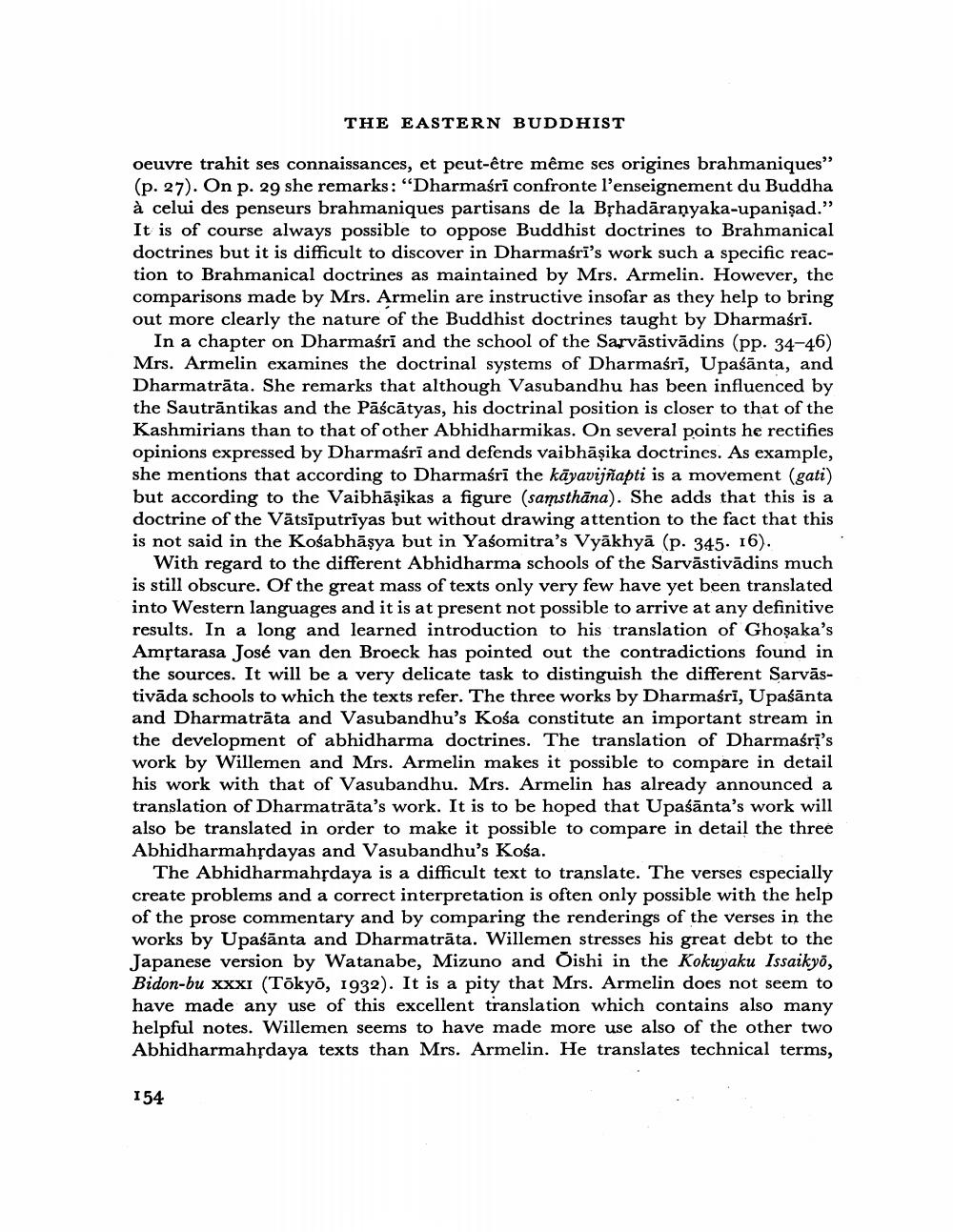Book Title: Book Reviews Author(s): J W De Jong Publisher: J W De Jong View full book textPage 4
________________ THE EASTERN BUDDHIST hmanicalfficult to discoverpose Buddhist Loadāranyaka-upa oeuvre trahit ses connaissances, et peut-être même ses origines brahmaniques" (p. 27). On p. 29 she remarks: “Dharmaśri confronte l'enseignement du Buddha à celui des penseurs brahmaniques partisans de la Bșhadāranyaka-upanişad." It is of course always possible to oppose Buddhist doctrines to Brahmanical doctrines but it is difficult to discover in Dharmasri's work such a specific reaction to Brahmanical doctrines as maintained by Mrs. Armelin. However, the comparisons made by Mrs. Armelin are instructive insofar as they help to bring out more clearly the nature of the Buddhist doctrines taught by Dharmasri. In a chapter on Dharmasri and the school of the Sarvāstivādins (pp. 34-46) Mrs. Armelin examines the doctrinal systems of Dharmaśrī, Upaśānta, and Dharmatrāta. She remarks that although Vasubandhu has been influenced by the Sautrāntikas and the Pāścātyas, his doctrinal position is closer to that of the Kashmirians than to that of other Abhidharmikas. On several points he rectifies opinions expressed by Dharmasri and defends vaibhāșika doctrines. As example, she mentions that according to Dharmaśrī the kāyavijñapti is a movement (gati) but according to the Vaibhāşikas a figure (samsthāna). She adds that this is a doctrine of the Vätsiputriyas but without drawing attention to the fact that this is not said in the Kośabhāşya but in Yaśomitra's Vyākhyā (p. 345. 16). With regard to the different Abhidharma schools of the Sarvāstivādins much is still obscure. Of the great mass of texts only very few have yet been translated into Western languages and it is at present not possible to arrive at any definitive results. In a long and learned introduction to his translation of Ghoşaka's Amptarasa José van den Broeck has pointed out the contradictions found in the sources. It will be a very delicate task to distinguish the different Sarvāstivāda schools to which the texts refer. The three works by Dharmaśrī, Upaśānta and Dharmatrāta and Vasubandhu's Kośa constitute an important stream in the development of abhidharma doctrines. The translation of Dharmasri's work by Willemen and Mrs. Armelin makes it possible to compare in detail his work with that of Vasubandhu. Mrs. Armelin has already announced a translation of Dharmatrāta's work. It is to be hoped that Upaśānta's work will also be translated in order to make it possible to compare in detail the three Abhidharmahsdayas and Vasubandhu's Kosa The Abhidharmahsdaya is a difficult text to translate. The verses especially create problems and a correct interpretation is often only possible with the help of the prose commentary and by comparing the renderings of the verses in the works by Upaśānta and Dharmatrāta. Willemen stresses his great debt to the Japanese version by Watanabe, Mizuno and Oishi in the Kokuyaku Issaikyo, Bidon-bu XXXI (Tokyo, 1932). It is a pity that Mrs. Armelin does not seem to have made any use of this excellent translation which contains also many helpful notes. Willemen seems to have made more use also of the other two Abhidharmahsdaya texts than Mrs. Armelin. He translates technical terms, 154Page Navigation
1 2 3 4 5 6 7 8
